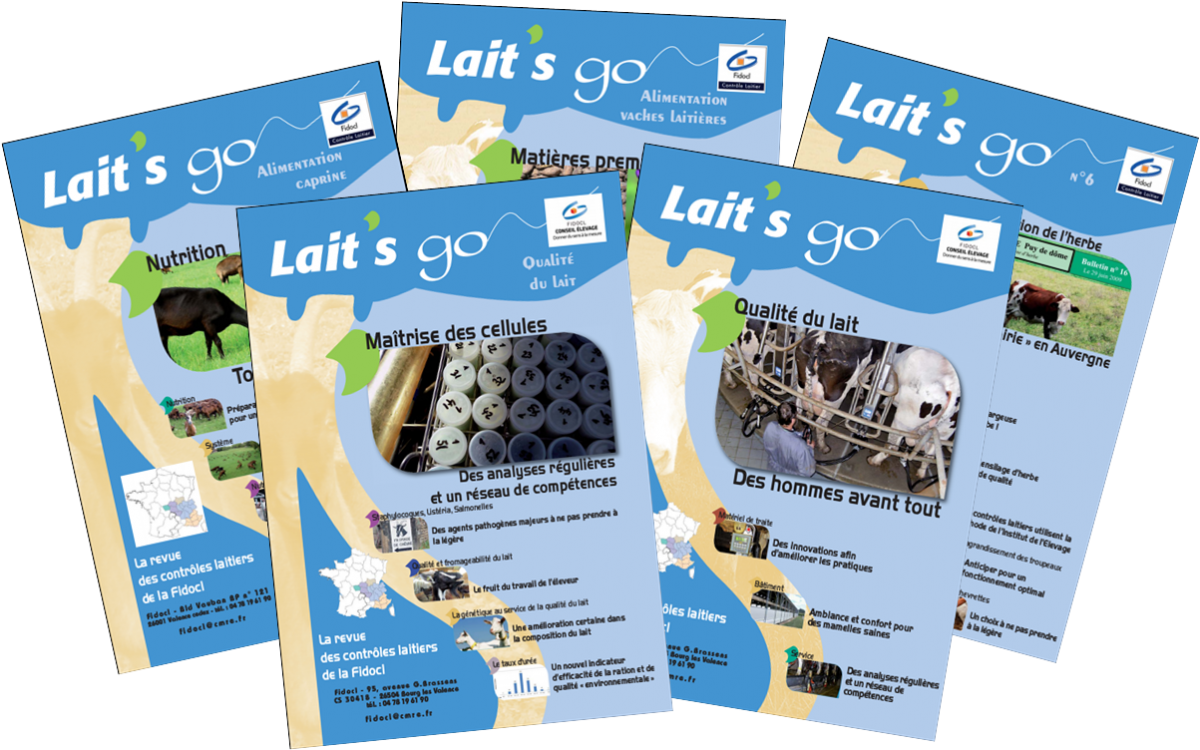Agrégateur de flux
I want to thank the ADSA Board of Directors (https://www.adsa.org/About-ADSA/Leadership), ADSA Executive Director Jerry Bowman, and the ADSA staff for their work in 2024 and 2025. It was a privilege to work with this dedicated group.
INTERPRETIVE SUMMARIES, DECEMBER 2025
Invited review: A systematic review of the effects of pair housing on dairy calf welfare and productivity. By Bučková et al., page 12878. Individual housing of young dairy calves is still prevalent in Europe as well as North America, but the adoption of social housing is gaining traction. In this review, we summarize research findings on the welfare and productivity of pair-housed calves compared with individually housed calves. The advantages of pair housing include better behavioral reactions to stressful husbandry procedures and improved social behavior.
Editorial Board
CONTENTS
Letter to the Editor: Response to Edvardsson Rasmussen et al. (2025)
The list of standard abbreviations for JDS is available at adsa.org/jds-abbreviations-24. Nonstandard abbreviations are available in the Notes.
Letter to the Editor: Associations between days open and dry period length versus milk production, replacement, and fertility in the subsequent lactation in Holstein dairy cows
The recently published retrospective observational study by Overton and Eicker (2025) is well conducted, revealing many associations between previous days open and days dry and their association with replacement risk and milk production in early subsequent lactation. However, the conclusions are unjustifiably bold considering that this is a retrospective observational study where the reason for the delay in days open is unknown and that controlled studies drawing different conclusions do exist.
Some closing words to the Journal of Dairy Science community
“Diligence. I looked it up, in your dictionary. Constant and earnest effort to accomplish what is undertaken. Persistence. Application. But also, toil. And pain.” (Quote courtesy of Definition Delaware LLC, with permission.) These were the words spoken by the character Ada Murray in defending her husband in the movie, The Professor and the Madman. As I reflect on the past 6 yr in service to the Journal of Dairy Science (JDS), there is no doubt in my mind that each monthly issue is a display of the diligent efforts of our authors, reviewers, and editors.
Extending Cow Lifespan in Dutch Dairy Farming: Farm Characteristics, Management Practices, and Behavioral Determinants
This study aimed to identify herd management styles and measures adopted by dairy farmers to extend cow lifespan and to explore the behavioral and farm-specific factors influencing these practices. A mixed-method approach was used, including a survey of 107 dairy farmers, in-depth interviews and farm visits with 10 farmers selected from the survey, of whom 5 had cows with a relatively low average lifespan (less than 4 years and 11 mo on average) and 5 had cows with a relatively high average lifespan (8 years or more on average).
Unveiling the mechanism of Lonicera japonica Thunb. polyphenols against Cronobacter sakazakii from powdered infant formula by untargeted metabolomics and its application as a natural disinfectant
Contamination by Cronobacter sakazakii in powdered infant formula (PIF) and the potential hazards of chemical disinfectants are pressing issues requiring urgent resolution. This study aimed to investigate the antibacterial activity and mechanism of Lonicera japonica Thunb. polyphenols (LP) against C. sakazakii and evaluate the efficacy of LP as a natural disinfectant in inhibiting C. sakazakii in biofilms on the common contact surfaces of PIF. The results showed that the minimum inhibitory concentration and minimum bactericidal concentration of LP against C.
The effect of DHA-rich algae oil supplementation in milk replacer on blood concentration of docosahexaenoic acid metabolites and cytokine production in white blood cells in calves
This study aimed to investigate the effect of dietary supplementation with docosahexaenoic acid-rich algae oil (DHA-RAO) on blood levels of selected docosahexaenoic acid (DHA) metabolites, and to assess its potential influence on cytokine production by white blood cells in neonatal dairy calves. Twenty clinically healthy Holstein male calves (8.1 ± 2 d old and 46.6 ± 4.2 kg, mean ± SD) were allocated into 2 experimental groups of 10 animals each: (1) not supplemented with DHA-RAO in milk replacer (MR; group CON); and (2) supplemented with 7.5 g of DHA-RAO/d in MR (group SUP).
QDA and electronic nose combined with machine learning methods to quickly predict consumer preference of Cheddar cheese
Consumer preference for Cheddar cheese is influenced by its aroma characteristics, with aroma serving as a key sensory attribute determining consumer acceptance. This study innovatively integrates qualitative descriptive analysis (QDA) with electronic nose (e-nose) technology to systematically characterize the flavor profiles of 27 common Cheddar cheeses available in the Chinese market. We evaluated 6 odor attributes of cheese using QDA and rapid capture of volatile flavor compounds by e-nose. Using the obtained QDA and e-nose datasets, 4 machine learning algorithms, namely, logistic regression, Gaussian support vector machine, k-nearest neighbors, and decision tree, were used to classify and predict the preference of Chinese consumers for Cheddar cheese.
Thermo-physiological responses and hutch microclimate of outdoor hutch-housed dairy heifers with or without continuous ventilation during a continental summer
Heat stress compromises the growth, health, and welfare of dairy heifers from an early age. With the rising frequency of summer heat-stress days, innovative and effective mitigation strategies are increasingly needed. This study evaluated the effects of continuous active ventilation on thermo-physiological responses and hutch microclimate in outdoor-housed dairy heifers during a continental summer (June to August, average temperature-humidity index = 71 ± 7.6). Holstein heifers (n = 32) were enrolled at birth and sequentially assigned to passive (PASS; rear window opened ∼20 degrees, and vents opened 50%) or active (ACT; solar-powered fan redirecting airflow via a custom opening in the hutch rear window, and rear vents open at 50%) ventilation.
Goat bone marrow mesenchymal stem cell-angiotensin–converting enzyme 2 attenuates Streptococcus uberis–induced ferroptosis in goat mammary epithelial cells by downregulating the reactive oxygen species-chaperone–mediated autophagy pathway
Streptococcus uberis (S. uberis) is a leading cause of environmental mastitis globally. Ferroptosis, a cell death pathway driven by Fe2+-mediated lipid peroxide accumulation, with reactive oxygen species (ROS) participating in this process, is related to the mechanisms of infections caused by other pathogens inducing mastitis, such as Escherichia coli (E. coli) and Staphylococcus aureus (S. aureus). This study aims to investigate whether ferroptosis occurs in S. uberis–induced mastitis and to develop corresponding therapeutic interventions.
Fortification of chamomile and saffron in dry yogurt production: Effects on its physicochemical and sensory properties
The study aimed to formulate fortified dry yogurt with chamomile and saffron, making a functional, probiotic, and therapeutic food. Fortified dry yogurt was prepared in 7:2:1 ratios of dry yogurt, chamomile, and saffron powders. Flavoring of fortified dry yogurt was done at 7:3 ratios of fortified dry yogurt and each flavor (mint, cumin seeds, fennel seeds, and black pepper powder). The prepared fortified dry yogurt was acidic (pH 3–4) and the total soluble solids were 49.97% of the product concentrate.
Clean label, complete, and sustainable: What do consumers know about protein products?
This study evaluated consumer perception of clean label, complete, and sustainable as they pertained to protein products. Two online surveys (n = 485; n = 505) and 5 focus groups (n = 32 consumers) were conducted to quantitively and qualitatively investigate consumer behaviors and beliefs regarding protein-fortified products. The surveys involved agree or disagree questions, multiple choice questions, check-all-that-apply questions, maximum difference scaling exercises, open-ended questions, and sliding-scale questions to investigate clean label, natural or artificial ingredients, good source of protein, and complete protein.
Genomic regions associated with blood metabolites and subclinical ketosis in early lactation Holstein cows
Modern dairy cattle populations have been intensively selected for high milk production; therefore, cows experience significant metabolic stress after calving and during the transition period. Breeding strategies aimed at making cows more robust and resistant to diseases without compromising milk productivity exist and have been implemented in some countries. Whereas genomic investigations have been conducted on both clinical and subclinical forms of ketosis, few studies have focused on measurable features reflecting metabolic processes, such as the blood concentrations of BHB and nonesterified fatty acids (NEFA) and urea, an indicator of nitrogen metabolism.
Effects of intramammary infection and dry-off treatment on the immune-metabolic profile of Alpine dairy goats
Sixty Alpine dairy goats were classified as healthy (HEAL, n = 30) or infected (INFE, n = 30) based on bacteriological culture of udder-half samples collected 7 d before dry-off. At −61 d from kidding (DFK), goats were dried off and randomly allocated to 2 homogeneous groups either receiving no treatment (15 HEAL, 15 INFE) or being treated intramammarily with 250 mg of cefazolin per half-udder (15 HEAL, 15 INFE). Milk yield, composition, and SCC were monitored at −82, 17, 45, and 80 DFK, and blood samples were collected at −66, −56, −7, and 8 DFK to assess plasma analytes.
Distribution of sialic acids in the bovine mammary gland across different physiological states
Highly pathogenic avian influenza (HPAI) A(H5N1) virus emerged in lactating dairy cattle in March 2024, causing mastitis-related disease and infections in other farm animals and workers. Recent work identified α2,6 and α2,3-linked sialic acids (SIA), which serve as influenza virus receptors, in the lactating bovine mammary gland; however, their distribution across stages of mammary growth and development remains unknown. We compared the distribution of sialylation in mammary glands of prepubertal dairy calves, primigravid dairy heifers, and lactating cows.
Effect of heat-resistant protease of Pseudomonas fluorescens on the quality of liquid milk: A physicochemical and proteomic perspective
Pseudomonas fluorescens is one of the common psychrophilic bacteria in liquid milk. The thermostable enzymes produced by P. fluorescens are an important cause of changes in quality and flavor of liquid milk during storage. In this study, 3 thermostable proteases derived from P. fluorescens, neutral metalloproteinase (Nm), extracellular alkaline metalloprotease AprA (AprA), and metalloprotease AprX (AprX), were added separately to liquid milk. The upper layer protein content of the 3 groups of samples continued to decline and the lower layer protein content first increased and then decreased.
Effects of whey protein isolate on the human gut microbiota and intestinal function in older adults
Whey protein is commonly used to prevent sarcopenia in older adults due to its high digestibility and amino acid content. Its bioactive components may also influence the gut microbiota, which plays a growing role in healthy aging as microbial composition shifts with age. This study investigated whether daily supplementation with whey protein isolate (WPI) improves gut microbiota diversity and composition in older adults. Sixteen participants consumed 59 g of WPI (35 g of protein) daily for 3 wk.






